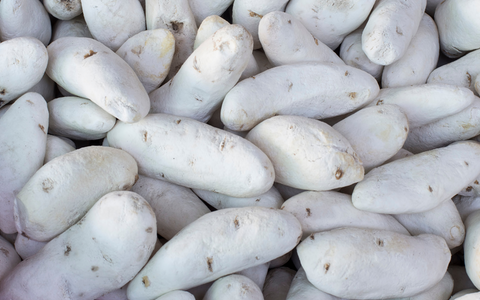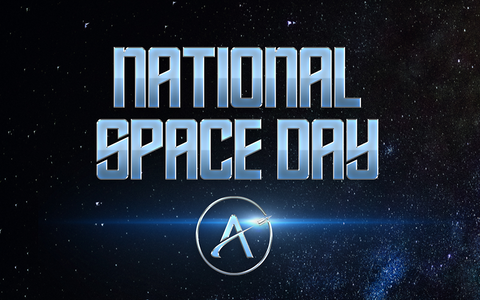Are you ready? Because we're about to blow your minds'. While it seems that the freeze-drying process is a modern way of processing food -- it's actually an ancient method that has been around for centuries! Yep, freeze-drying has been around way before Astronaut Ice Cream was being created for Astronauts to take to space.
How Modern Freeze-Drying Works

NASA invented the modern technology to freeze-dry food in preparation for the long duration Apollo missions. This modern technology is how we make our Astronaut Foods snacks today! Here's how it works: a vacuum pump lowers the pressure to almost zero, which causes the frozen water in the ice cream to start to evaporate—without melting. Heat from the light helps this process along. As the water vapor enters the second flask, it freezes. Eventually you end up with freezing cold, bone-dry Astronaut Ice Cream! Yum!
So, freeze-drying at it's most basic level, involves using very low pressure, extreme cold and gentle heat to remove solid water (ice) out of a frozen food without melting the food first.
How Ancient Freeze-Drying Practices Work

Interestingly, the Aymara -- people in Bolivia's high Andes -- figured out how to freeze-dry potatoes without pumps or pipes or a freezer. For centuries, they have eaten freeze-dried potatoes, all by taking advantage of freezing mountain temperatures and a baking sun to prepare the local staple called “chuno.” Chuno (‘CHOON-yo’) means “wrinkled” in Aymara. This method of preparing potatoes has not changed since it's invention more than 1,500 years ago.
In an excerpt from book Ingredients: The Strange Chemistry of What We Put In Us and On Us, author and chemist George Zaidan, explains how the Aymara people pioneered in the process of freeze-drying food for unlimited storage and to rid poisons from their food.
"
- Get some wild toxic potatoes.
- Freeze the potatoes by leaving them outside overnight at high altitude.
- Trample the frozen-solid potatoes like a French winemaker tramples grapes.
- Put the trampled potatoes in a loose wicker basket, put the basket in a stream or creek, and leave for a few weeks.
- Put the potatoes on your front doorstep and let them freeze overnight and dry out in the daytime, squeezing occasionally, then leave for another few weeks.
- Y voila! Freeze-dried potatoes. "
Uncanny Similarities

What's shocking is how similar the Aymara's ancient method of freeze-drying is to that of modern-day techniques. The difference is how the Aymara use their natural environment of high altitude, low pressure and the sun to get the freeze-drying job done.
In fact, their method of freeze-drying is quite sophisticated, as their trampling of potatoes and leaving them in running water, rids the wild tubers of about 97% of their toxins. This means the Aymara are left with food that is not only edible, but is storable for up to twenty years. Quick carbohydrates available at all times? Now, that's an incredible famine-proof, survival technique if you ask us!
Giving Credit Where Credit Is Due
We'd love to say that Astronaut Ice Cream was one of the first foods to be freeze-dried, but it turns out that wild potatoes get to claim that title. So, while we're glad that NASA created the modern technology to make it possible to freeze-dry food in mass quantities, NASA did not invent the art form of freeze-drying. No, the innovative credit goes to the Aymara people, for a process that now let's us freeze-dry just about anything-- including our beloved Astronaut Ice Cream!







